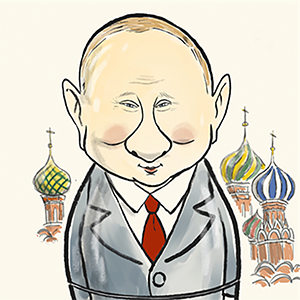'Life of Chuck' review: It's a wonderful, apocalyptic life in Stephen King land
Published in Health & Fitness
“The Life of Chuck,” a slick but ickily grandiose reminder to take your dance lessons while you can, also reminds us that every generation gets its own variations on “It’s a Wonderful Life” — movie fantasies designed for affirmation and comfort, while unnerving us a little.
There’s a third reminder, too: One person’s eyeroll is another’s shattering and beautiful reminder that life is beautiful, maybe harsh and sometimes lonely and full of wrong turns with a possible apocalypse looming. But beautiful.
This latest Stephen King screen adaptation is written and directed by Mike Flanagan, best known for “The Haunting of Hill House” on Netflix, along with “Oculus,” “Before I Wake,” “Doctor Sleep” and other features. Elements of all this find a home somewhere in the running time of “The Life of Chuck,” told in three reverse-chronological chapters. It begins with an ending — the planet’s — and ends with the adolescence, first crush and tender heart of an orphaned boy, shadowed by ghosts, headed for life as an accountant. It’s what his wizened, grieving accountant grandfather (played by Mark Hamill) wanted for him all along, right or wrong.
Narrated throughout by Nick Offerman, the first and most intriguing chapter focuses on a teacher, Marty, played by the excellent Chiwetel Ejiofor. He is at his wit’s end, dealing with hopeless students and even more hopeless parents. Their reasons for despair are beyond anyone’s control.
The world has had it. It’s quitting time. We learn some details on the fly, from news reports and townsfolk mutterings, about whole chunks of California tumbling in the ocean, wildfires, earthquakes, satellite communication gone awry, Wi-Fi and the internet itself dying minute by minute. The center isn’t holding.
The weirdest thing of all is the most darling. Around town, Marty and others notice a proliferation of billboards and signage congratulating someone named Charles Krantz on “39 great years!” Meantime Marty and his ex-wife Felicia (Karen Gillan), on good terms, commiserate by phone about the latest roster of calamities. Director Flanagan handles the escalating insanity with suggestive ambiguity, nothing too bombastic for as long as the story allows.
Later, at night, on every window on every house within view, a satellite (or celestial?) video image of Chuck appears, long after power has been lost. Marty and Felicia stare at the stars in Felicia’s backyard. Maybe the love they knew once remains intact, unlike everything around them. And maybe they’ll have to settle for wondering.
Part 2 is Chuck’s story, at least a piece of it, taking place prior to the first chapter. Tom Hiddleston portrays this everyman accountant, married with a daughter. Chuck has traveled to a new town for a convention. Between conferences he’s outside, strolling, and drawn to the drumming skills of a sidewalk busker (Taylor Gordon). Catching the eye of a young woman (Annalise Basso), recently dumped and not happy about it, he asks for her hand while the drummer does her thing. This is not just the movie’s crucial scene; it’s meant as a live-is-worth-living demonstration, precision-choreographed and flashy beyond all conventional notions of accountancy.
Where did Chuck get the moves? The answers come right on schedule in the concluding chapter, after we’ve learned the adult Chuck’s full circumstances and fate. The childhood versions of this everyman archetype (he’s not really a character) are played by Benjamin Pajak and, in adolescence, Jacob Tremblay (of “Room”). Chuck endures a difficult, grief-laden childhood after the tragic death of his parents. He finds love and solace under the loving care of his grandparents, played by Hamill and Mia Sara. Here, King’s material, adapted by Flanagan, inches into small-town horror behind closed doors, with the off-limits storage room in Chuck’s grandparents’ house containing something wicked. Or at least not of this world.
Clearly “The Life of Chuck” works for many. It snagged the coveted audience award at last year’s Toronto International Film Festival, a frequent harbinger of the best picture winner at the Oscars. Well, maybe. This may be one of those movies, like “The Shawshank Redemption” (another King story), that comes and goes at the theaters and then becomes one of those beloved films that makes people tear up just saying the title.
It is, however, mighty gooey stuff, sanctimonious and faux-humble in its embrace of ordinary lives and, in the end, a weirdly scaled expansion of a familiar idea borrowed from Walt Whitman (name-checked in the movie) and his line in “Song of Myself”: “I am large, I contain multitudes.” We all are, and do. But setting a genial if frustrated accountant’s life against the universe’s curtain call is a little too, you know, too-too.
A final word about the visual landscape of the film. Maybe it’s just me, but when Chuck dances like he’s never danced before, the town square (most of the film was shot in various Alabama locations) has been made to resemble one of those eerie Hallmark Channel Christmas specials, but in July. You keep waiting for the big reveal: The town’s “The Truman Show”! It can’t be real! But the reveal never comes. It’s not a documentary or anything, but the best Stephen King stories on screen keep one foot in a world we recognize, so that we can step off into another world, and explore. After the persuasively strange first chapter’s over, “The Life of Chuck” is a duller kind of strange.
———
'THE LIFE OF CHUCK’
2 stars (out of 4)
MPA rating: R (for language)
Running time: 1:50
How to watch: Now in theaters
———
©2025 Chicago Tribune. Visit chicagotribune.com. Distributed by Tribune Content Agency, LLC.










Comments